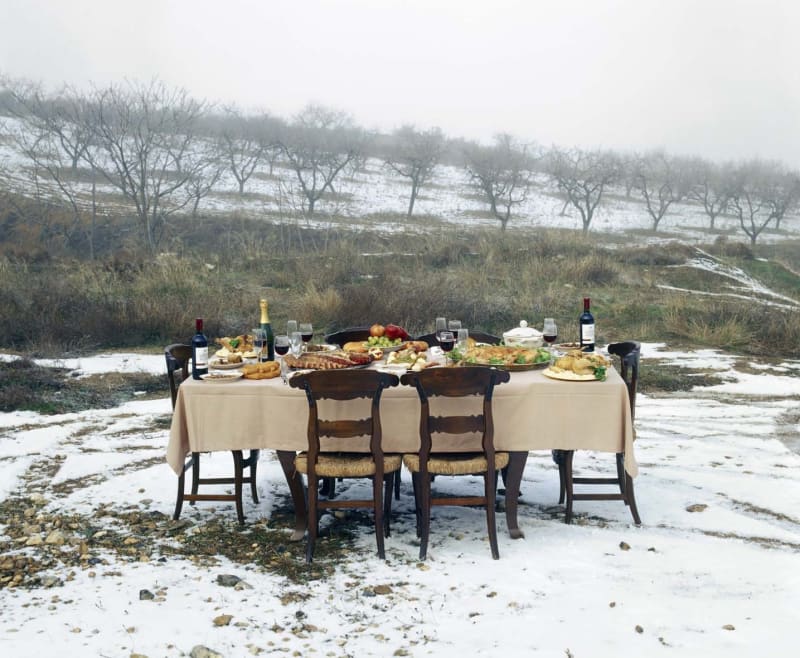Unexpected Guests
In Spain, major social get-togethers (such as weddings or holiday family meals, for example) can start shortly after noon and carry on way after dusk. In this long intermezzo, the table is refilled with an incessant succession of hors d'oeuvres, seafood, roasted lamb, pork, salads, abundant wine, seasonal sweets, liquor, and cigars. To ease digestion, the meal is often spiced up with juicy gossip and the laundering of family secrets, unsolicited medical updates, bad jokes, ill-intentioned puns and eventually blatant insults that in the worst cases leads to drama (domestic violence indeed spikes during the holiday season). The vibrant atmosphere at such social gatherings, which amateur photography has enabled us to shamelessly share with others, is the favorite subject of Greta Alfaro (born 1977, Pamplona, Spain). It also serves as an inspiration for her newest project at Marta Cervera gallery in Madrid. Included in Photoespana, Spain's most eminent photography festival which this year is articulated around the leitmotif of "the everyday," it marks the artist's successful gallery debut for which she's been awarded a prize by the Spanish publication El Cultural.
Unlike her previous series Budapest & Vienna and Celebration, for which Alfaro appropriated and digitally manipulated family photographs from albums bought at flea markets, her most recent works depict no human figures. Far from the kitschy decor of earlier works, the table is now situated outdoors in a desolate winter landscape. In the first photograph, it is heaped with culinary delicacies. The last shows only the unsettling remains of a messy gathering as vegetables, unopened bottles of wine, cutlery, broken dishes, dropped chairs and even dismembered animal legs appear scattered on the floor around the table.
A video work, In ictu oculi (In the twinkling of an Eye) reveals the identities of the mysterious guests: a large group of vultures that descended en masse to wolf down the banquet. Unaware of the presence of Alfaro's "hidden" camera, and clearly unaccustomed to such formal salon settings, they fight over the lamb chops and drumsticks, breaking the glassware and knocking over the chairs. Not unlike in Bruce Nauman's nocturnal films of his mice-infested studio, the work offers a fascinating revelation of what occurs in the artist's absence. Sharing Nauman's voyeuristic tendencies, Alfaro alludes to the excesses that the dubious genre of family photography has traditionally failed to capture, if not deliberately concealed. Despite their majestic beauty, vultures have traditionally enjoyed a rather negative reputation. From Freud's psychoanalytic read of Leonardo's The Virgin and Child with Saint Ann, to the more disturbing versions in the works of Klee and Kafka, their appearance in art and literature has often been linked to deviant behavior, maladies and death, possibly due to their unorthodox eating habits. The unrefined attitude displayed in Alfaro's "domestic" footage will probably not change their troublesome image. On the contrary, it continues to provoke a kind of discomfort both familiar and uncanny. While my psychoanalyst hasn't given his opinion on this matter, I couldn't help picturing certain relatives and co-workers sitting at that table.

